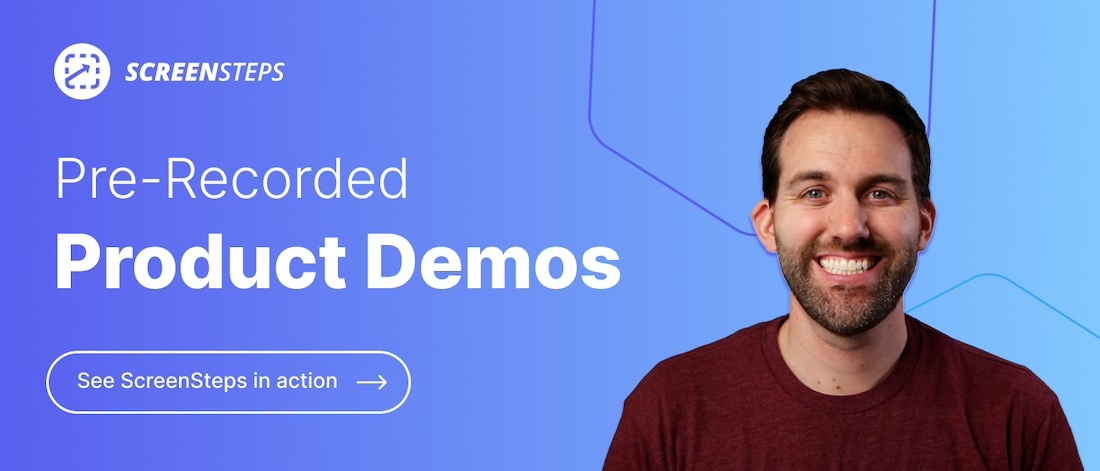Confluence vs ScreenSteps: How is the User Experience Different?
Searching for the right software solution can be overwhelming.
You can look at a list of all the features a software has to offer, but it still doesn’t give you a feel for what it will be like to use the software for your day-to-day work. It is new, so everything seems exciting (or maybe at least an improvement over what you have), but which software is the right one for you?
Somehow, you’ve narrowed down your list of potential knowledge management software. Atlassian Confluence and ScreenSteps have made the list. But, what makes these software tools different? And how will the user experience be?
Hopefully, this blog post can help answer that. Admittedly, I work for ScreenSteps, a knowledge ops solution. But my goal with this blog post is to provide an objective review to help you understand what it would be like to use these applications.
In this blog post, I’ll first illustrate what it’s like to use Confluence vs ScreenSteps. Then you can review the differences between the softwares’ features in a quick overview table. (Skip to the feature comparison table here.)
By the end of this article, you will hopefully have a better understanding of what it is like to use the two platforms to transfer your knowledge in your company.
What is Confluence?
Confluence is part of the Atlassian software applications. Primarily, cloud-based software is a collaboration and project management tool.
While most of its features are focused on collaboration, it also provides a knowledge base or corporate wiki where teams can share knowledge. However, the knowledge base features and layout are considered more of a corporate wiki.
Confluence allows you to create different spaces for different teams or departments. You can also make your knowledge base articles available to your customers. This allows customers to self-service answers.
What is ScreenSteps?
ScreenSteps is a knowledge ops solution. The solution helps you overcome training and performance challenges by solving the root problem — an inability to transfer knowledge efficiently to your employees.
The knowledge ops solution is a double-edged sword. It provides two important elements to better help you transfer knowledge:
- A knowledge ops platform: It’s similar to a knowledge base but more. It helps you create and manage your digital guides and training courses.
- Find & Follow Framework: A framework and methodology to help you make knowledge transfer more efficient.
ScreenSteps can be used as an internal and external knowledge base. You can create, store, and share digital guides across your organization. By pairing the knowledge ops platform with the Find & Follow Framework, you speed up employee training and improve employee performance.
Quick table overview: How Confluence features compare to ScreenSteps
Confluence and ScreenSteps both have a lot to offer when it comes to authoring features. They also have limitations.
Use this bulleted summary to compare the different features for the two knowledge platforms.
|
Confluence |
ScreenSteps |
|
|
Cost |
|
|
|
Users |
|
|
|
Storage |
|
|
|
Organization |
|
|
|
Authoring |
|
|
|
Formatting Options |
|
|
|
Collaboration & Feedback |
|
|
|
Editing & Updating Pages |
|
|
|
Verify & Certify Content |
|
|
|
Permissions Management |
|
|
|
Search & Discoverability |
|
|
|
Notifications |
|
|
|
Analytics & User Reports |
|
|
|
Integrations |
|
|
|
Customizations |
|
|
|
Customer Support |
|
|
|
Security |
|
|
|
Mobile App |
|
|
Who is Confluence a good fit for?
Confluence could be a good knowledge base option for many your company if you fit into any of these situations:
Confluence is a good fit for your company if you are:
- Small-to-medium sized businesses
- Need an intuitive, easier learning curve
- Collaboration or project management are your top priorities
- Your company doesn’t experience too much change
- You have basic procedures
- You don’t deal with compliance or quality assurance
- If you don’t need your guides to be accurate (When you have a lot of people contributing to the articles, you lose control of what is in there.)
Who is ScreenSteps a good fit for?
When you are looking for a way to more efficiently and effectively transfer knowledge to your employees and customers, ScreenSteps is a good option for your business. Some situations that would suggest ScreenSteps is the right fit for your company include:
- You have complex procedures
- You need troubleshooting guides
- Accuracy is essential and you can’t afford mistakes
- You are experiencing operational change
- You have frequent adaptive change
- You need to be able to maintain and update your articles regularly
- You need to be agile
Become a more agile business with the right software
Both Confluence and ScreenSteps are incredible tools. As you can see, they both have their strengths and weaknesses.
Choose the software solution that will best support your company’s goals.
When it comes to knowledge transfer, ScreenSteps helps you create more confident, independent, and efficient employees. The ScreenSteps knowledge ops platform helps your team be agile with all the changes.
Take a look for yourself. Watch our pre-recorded demos. In the videos, you’ll see how the ScreenSteps knowledge ops platform works, including the authoring tools and more.



